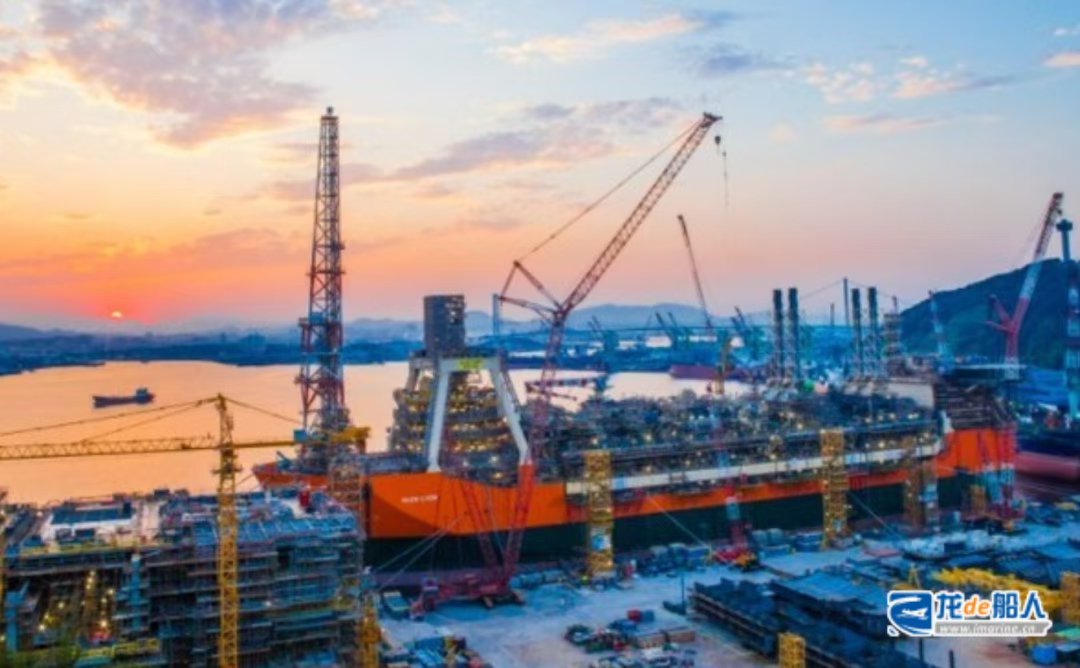As the youngest shipyard under HD Hyundai Heavy Industries, the current situation at Gunsan Shipyard following its restart has raised significant concerns within South Korea’s shipbuilding industry.

South Korean media reports indicate that during the 421st extraordinary session of the North Jeolla Provincial Council, council member Kang Tae-chang directly raised the issue of restoring normal operations at the Gunsan Shipyard during provincial government questioning. He criticized, “Since halting production in 2017, the Gunsan Shipyard partially resumed operations in 2022 but remains stuck at the level of constructing ship hull blocks.” Local residents are furious, accusing HD Hyundai Heavy Industries of taking subsidies without fulfilling substantive commitments.”
When HD Hyundai Heavy Industries’ Gunsan Shipyard resumed operations at the end of 2022, North Jeolla Province and Gunsan City signed an agreement with HD Hyundai Heavy Industries. Under the agreement, the national government and local governments allocated 4.3 billion won and 38.5 billion won respectively to support five projects at the Gunsan Shipyard.
It has now been three years since Gunsan Shipyard announced its restart, yet it still lacks the capability to build entire vessels and has achieved no significant results. The subsidies promised by the national and local governments are set to expire at the end of this year.
Kang Tae-chang emphasized: “The future development plan for Gunsan Shipyard remains unclear. North Jeolla Province must formulate robust and responsible measures to help restore normal operations at Gunsan Shipyard and dispel the distrust among local residents.”
Kang Tae-chang specifically pointed out: “The recent Korea-U.S. cooperative shipbuilding project—MASGA—proposed by the South Korean government to the United States includes plans to establish a U.S. Navy maintenance, repair, and overhaul (MRO) forward base at Gunsan Port. If the Gunsan Shipyard can be transformed into a domestic MRO hub in South Korea, it will open up a new development path, and therefore, preemptive measures from the North Jeolla government are urgently needed. Restoring normal operations at the Gunsan Shipyard is a core issue that will determine the manufacturing ecosystem and youth employment in North Jeolla Province.”
In response, an official from North Jeolla Province stated: “To achieve the normalization of Gunsan Shipyard, we are continuously negotiating with HD Hyundai Heavy Industries to diversify high-value-added ship production, such as LNG and LPG hull blocks. We are also requesting that a new development direction be proposed after the conclusion of financial subsidies. The possibility of establishing an MRO base utilizing Gunsan Shipyard’s large dry docks will be retained. We plan to collaborate with the government and political circles to formulate revitalization plans, including the construction of a maintenance base for specialized naval and coast guard vessels.”
Plans to designate HD Hyundai Heavy Industries’ Gunsan Shipyard as a MRO base for U.S. Navy vessels were first reported as early as mid-August. It is reported that the South Korean government intends to select one of three shipyards—HJ Heavy Industries, K Shipbuilding, or HD Hyundai Heavy Industries’ Gunsan Shipyard—to exclusively handle MRO operations for U.S. Navy vessels.
However, while South Korea is actively discussing the possibility of designating HD Hyundai Heavy Industries’ Gunsan Shipyard as an MRO base, rumors about the sale of the Gunsan Shipyard have been circulating within the South Korean shipbuilding industry. Nevertheless, these rumors have been strongly denied by HD Hyundai Heavy Industries, which stated: “The company has never considered selling the Gunsan Shipyard and has no reason to do so.”
Previous reports indicate that HD Hyundai Heavy Industries’ Gunsan Shipyard officially resumed operations on October 28, 2022, and has since been responsible for constructing hull blocks for HD Hyundai Heavy Industries’ Ulsan Shipyard. Having consistently served as a subcontractor over the past three years, this arrangement has sparked significant local discontent, with critics asserting that “Gunsan Shipyard is not a shipyard but a block manufacturing plant that cuts, welds, assembles, and ships components to Ulsan.”

Previous analyses have indicated that labor shortages are the key reason Gunsan Shipyard cannot expand production. Only when all essential production conditions are met and competitive advantages over other shipyards are secured will it be possible for the yard to independently undertake new ship orders. Typically, constructing a new vessel requires at least 3,000 workers, a standard that Gunsan Shipyard’s current workforce clearly falls short of.
Established during the peak shipping market boom before the global financial crisis, Gunsan Shipyard began construction in early 2008 and officially commenced operations at the end of 2009. The shipyard occupies 1.8 million square meters and boasts a 1 million-ton drydock approximately 700 meters long. It is equipped with a 115-meter-tall gantry crane with a maximum lifting capacity of 1,650 tons. At its peak, Gunsan Shipyard employed over 6,000 people and built approximately 20 ships annually.


